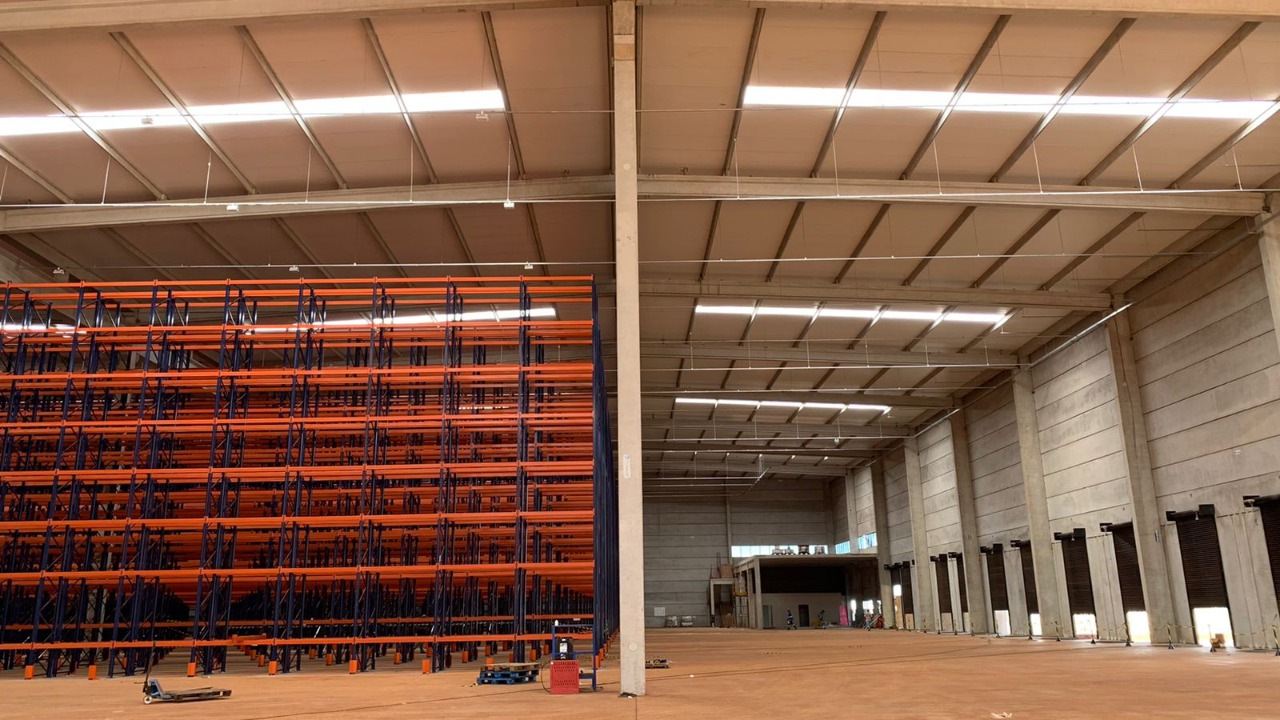Industrial retrofit is a revitalization and modernization procedure that replaces the need to build new facilities entirely from scratch. The economic benefits are very attractive, because it assumes that you can take advantage of certain facilities and just upgrade them to become more efficient and sustainable.
The growth of the practice of retrofit is a reflection of the awareness of managers in relation to industrial sustainability, aiming to configure a more economical production line without giving up productivity. This is what we will talk about in this content, explaining in detail how the retrofit technique helps you save money. Check it out!
What is industrial retrofit?
Retrofit in civil construction basically consists of renovating and revitalizing old buildings or buildings in need of repair at certain points. The goal is to update these works in terms of safety, performance, and functionality.
It is important to point out that the term is broad and also applies to industrial equipment and machinery in general. In this sense, the intention of retrofit is to replace old machinery with more up-to-date versions, and consequently more economical and with better performance.
In building renovations, the main objective is to revitalize and modernize an old structure so as not to have to build a completely new one from scratch. Thus, it is possible to enjoy the benefits of a modern and sustainable project without the high costs of a new construction.
In the case of retrofitting equipment and machinery, the savings will come in the medium and long term. Although the replacement of the machinery represents some initial cost, the return on investment is guaranteed, since the modern versions of the new equipment will have better performance allied to lower energy consumption.
Still on the subject of retrofitting equipment, depending on the type of machine, it is also possible to revitalize it without having to purchase a new one. But it is worth remembering that this type of retrofit requires specialized labor. In this case, the procedure can usually be associated with:
- Sensor exchange;
- Wiring change;
- Replacement of worn-out mechanical parts;
- Alignment;
- Lubrication;
- Modernization of the electronics.
In architecture and civil construction in general, the retrofit work is based on adjustments to the architectural project, which includes:
- Corrections;
- Replacement of electrical, hydraulic, and telecommunications infrastructure;
- Implementation of more functional solutions - such as modern ventilation and natural lighting systems, which combine operational resource savings and high productivity in the industry.
What are the differences between retrofit, renovation, and maintenance?
The term retrofit, in free translation, means to modernize/improve something so that it becomes more functional. Industrial retrofit, therefore, is related to any type of service that aims to update the production chain, such as the exchange of machinery we mentioned earlier.
Renovation, on the other hand, is more related to the restoration and repair of something that has not been working well. The intention is to recover the original conditions of that solution, rather than to transform it into something more modern, as in the case of retrofit.
As for maintenance, this practice is a set of actions that aim to maintain/preserve the machinery and other facilities in perfect working order. Preventive maintenance, for example, is a frequent industrial practice and aims to identify any signs of equipment failure so that managers can intervene before the problem gets worse.
Is it possible to retrofit natural lighting and ventilation projects?
Yes, in fact, investment in lighting and natural ventilation projects is in itself a type of industrial retrofit - as long as the designers are relying on high-performance, well-dimensioned solutions. The main example of retrofit in this case is the installation of solutions such as linear domes, permanent ventilation shutters, and industrial louvers.
These solutions bring uniform lighting, thermal comfort, and air quality to the industrial warehouse. All this at zero energy cost, which is essential from the point of view of sustainable architecture, energy efficiency, and valorization of the industry in the market. We will talk more about these solutions throughout the content.
What are the advantages of industrial retrofit?
We have seen that aspects such as resource savings, site safety, and plant efficiency are indisputable advantages of the industrial retrofit service. Next, we will delve a little deeper into these aspects.
Modernization with sustainability
It is impossible to talk about retrofit without talking about sustainability in the industry, because all the objectives of this service are related to the conscious use of the planet's resources, the reduction of environmental impacts, and the quality of life in the work environment. Let's go to the highlights of retrofit:
- Implementation of innovative and more functional solutions;
- Improving the energy efficiency of old facilities;
- Guaranteed safety and health in the work environment;
- Intelligent use of natural lighting and ventilation;
- Less costs with labor, materials, and maintenance;
- Otimização econômica para a indústria;
- Reduction of environmental impacts on the planet.
Quality of life in the workplace
Besides generating less waste and reducing the overall cost of the work, a retrofit job is also very valuable from the point of view of quality of life at work and the humanization of corporate practices. It is necessary to preserve the employees' well-being in order to maintain the group's productivity. This also has to do with the safety of people and assets.
After all, old buildings have an intense schedule of maintenance of systems and machinery to prevent accidents, especially those related to the electrical part, such as fires. All this generates costs and stress for managers.
With retrofitting, these systems are modernized and become much safer. Not to mention that the company will save on maintenance costs that used to be frequent.
Energy efficiency for industry
Still within the scope of economic optimization, one of the main objectives of industrial retrofit is to allow factories to achieve energy efficiency. With a good revitalization plan - which includes natural lighting and ventilation solutions such as domes, blinds, and louvers - it is possible to achieve significant savings in the electric energy bill.
This is because, thanks to these systems, it will no longer be necessary to rely on exhaust fans, air conditioners and artificial lamps during most of the workday. Another positive point is that these improvements also contribute to the health of employees, because they bring maximum thermal comfort and high air quality even in totally enclosed warehouses.
Smart, long-lasting savings
Old structures usually present a series of problems. They are defects in the electrical installation, problems with light fixtures and air conditioning systems that do not work, hydraulic structures compromised with leaks and infiltrations, loss of thermal and acoustic comfort... This is just to focus on the most common losses.
All these problems imply a very high maintenance cost. In addition, as we saw in the previous topic, they compromise the safety and healthiness of the workplace. With this in mind, it can be said that industrial retrofit results in smart and lasting savings, which are based on three fronts: energy efficiency, low maintenance costs, and quality of life at work.
In this case of retrofit with industrial louver, for example, it was possible to solve three serious problems of the building: high temperature, low air renewal rate and strong internal odor. In this case of retrofit with industrial louver blinds, it was possible to control the entry of air in a warehouse located in a region of great climatic variations and still favor the entry of natural light.
The third example shows the results that can be achieved with the implementation of linear domus: in this case of retrofit with Domus Linealight it was possible to renew the natural lighting system, providing a more intense, diffuse, and long-lasting luminosity - which certainly also started to influence the performance of the employees.
What are the stages of an industrial retrofit job?
A few steps must be followed in order for modernizations to be implemented correctly and safely. The first steps to be completed are, in this order:
- Controlled demolition, to remove defective/defective material;
- Structure reinforcement, to be able to proceed with renovations without physically compromising the building;
- Closing and finishing.
After these initial steps, it is also necessary to replace and modernize the electrical, telephone and data, hydraulic, and air-conditioning systems.
What to consider before retrofitting in industry?
Before making any significant investment in retrofitting industrial buildings for energy and sustainability improvements, it is important to determine if it is worth the effort compared to other building conditions. It will be necessary to quantify the estimated costs and benefits brought about by the proposed project. For this, it is interesting to consider the following aspects:
- What costs should I consider for a better comparison between the options on the table?
- What is the value of future energy savings in today's terms?
- How might this affect other aspects of the plant? Are there other benefits besides energy savings?
- What is the level of reliability for energy savings? Is there any uncertainty that should be quantified?
Costs associated with retrofitting industrial buildings can be approached from two perspectives:
- Total cost or gross capital cost: this is the entire cost of retrofitting industrial buildings;
- Incremental or partial cost, which corresponds to the portion of the cost of retrofit in industrial buildings attributed to energy efficiency improvements.
How to hire the industrial retrofit service?
With so many proven benefits, you are probably wondering how to make an industrial retrofit yield a proper return on investment (ROI) and ensure the quality of the facilities. The first step is to rely on a specialized and qualified supplier. Maintenance of building structures requires technique and knowledge, as well as compliance with technical and safety standards.
Well, let's get to the points that you must analyze in order to choose a good supplier:
- Make sure you have the environmental license for the plant;
- Check compliance with and respect for technical safety standards;
- Assess the company's socio-environmental responsibility profile;
- Analyze the best cost-benefit based on the ROI and payback of the solution.
A specialized supplier will assist in all these points and indicate what should be prioritized in each retrofit project in order to provide the best possible results in terms of economy and sustainability for your business.
We at MB Group can help you in this mission. We are a reference in the execution of projects and in providing industrial retrofit services with solutions for natural lighting and ventilation. See this success story and understand how the Lubeka factory was able to reduce operating costs with the MB Group's retrofit!





